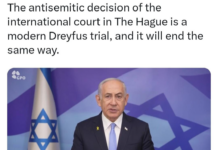Journalist Hafsa Kara-Mustapha argues that the only long-term solution to prevent hajj tragedies, while at the same time maintaining the Islamic character of the holy cities, is to internationalise the administration of Makkah and Madina.
A few years ago a former colleague who’d returned from hajj told me of his encounter in Mina with a rather spirited pilgrim from Egypt.
When performing the stone throwing ritual my friend, a very soft spoken and rather calm Bahraini, noted that his Egyptian counterpart was not only throwing the customary pebbles at the Jamrah but as many projectiles as he possibly could.
Not content with pebbles and extra rocks, he then removed his sandals and prepared to throw them as well. By that point my friend turned to him and said: “Brother a few pebbles will suffice, this is just a symbolic gesture that doesn’t require such effort.”
The man, turned to him angrily and replied: “Why do you care? Is Satan your brother or father?”
This anecdote, while amusing (especially when narrated in the appropriate Egyptian accent), goes some way to explain why the stone throwing ritual has become such a dangerous exercise in Islamic piety.
Very often eagerness and excess have replaced spirituality and common sense. More rocks and more zeal seem to be the order of the day and reasoned voices are once again shut down for fear of expressing what amounts to blasphemous opinions.
Subscribe to our newsletter and stay updated on the latest news and updates from around the Muslim world!
Mina stampede
Over 700 pilgrims of all ages are reported to have died yesterday in what will no doubt be remembered as one of the deadliest of hajj’s.
Already in the week before the start of pilgrimage, in early September, a huge crane fell inside the Grand Mosque killing 118 worshippers.
A freak lightening bolt struck the mammoth metal contraption causing it to break and fall to the ground with devastating effect. Many argued that had this happened after the start of the hajj the number of victims would have been much higher.

As is often the case when tragedy strikes, however, questions have to be asked as to their root causes.
In the case of the Eid al Adha catastrophe the cause was a stampede. Humans panicking and frantically running in large groups. While attempting to escape from one side, no doubt contributed to a stampede on the other.
No one for sure knows how these things start but once triggered the results are normally devastating.
Some are blaming Saudi authorities claiming they need to do more while others point to the lack of discipline from pilgrims who are too eager to perform the rituals and fail to follow simple procedures.
The truth is all parties are to blame, including Muslims who are not even present in Makkah today.
Hajj tragedies
In the past 25 years we’ve witnessed some six similar tragedies and every time some measures are taken to reduce the risk of a stampede on the one hand while increasing it on the other.
How so? By allowing ever growing numbers of pilgrims to perform the hajj every year.
The reality is that the ancient city of Makkah is no longer able to cater for the handful of pilgrims it hosted up until some 50 years ago. Faster and cheaper forms of transport have meant that what was once a trip available to a fortunate few is now accessible to scores of devout Muslims from across the world.
As a result, Makkah now has to accommodate as many as 4 million pilgrims every year. Saudi Arabia is of course an oil rich kingdom, but profits generated from the annual hajj swell the state coffers by some $8bn a year.
In order to cater for these pilgrims, Saudi officials have been frantically building large hotel complexes and shopping malls offering a wide variety of hajj experiences. From the humble tent dwelling to the luxurious 5 star treatment reserved for a privileged few.
These vast infrastructure projects have been widely and understandably criticised. Many have been built on ancient historical sites and have seen the ancient city slowly but surely stripped of its history and character. Turning the birthplace of Islam and its Prophet (pbuh) into a more flamboyant version of America’s Las Vegas!
In this respect, Saudis are in a difficult position. Should they limit the constructions they will be criticised for not investing the money generated from hajj back into the development of Makkah. When they do, they are criticised for its destruction.
Either way, both Makkah and Medina are not the sole propriety of the Saudi ruling dynasty but of all the Muslim Ummah. While Saudi nationals are free to be ruled by whomever they wish, 1.6bn Muslims do not have to accept the whimsical decisions of a ruling family they never chose or even approve of.
Islamic consensus
In the long term, both Makkah and Medina will have to come under an independent governorate lead by a leader from a Muslim majority nation. A three to five year term in which the fate of the two holy sites of Islam will be directed by a Muslim who is not from the Ibn Saud family.
The money generated from the pilgrimage will cover the costs of the development and upkeep of the two holy cities and will have to be audited annually by international respected firms who will ensure the revenue is made public for all to see. Technology already exists to ensure transparency is at a maximum.
A council of leaders from across the Muslim world will have to agree to major changes to both the architecture of the sacred cities as well as regulations governing the ritual of the hajj. A majority will approve these changes.
Every five years the leadership will change automatically and a new candidate will be tasked with the stewardship of Makkah and Medina.
In the short term, however, it is imperative that the numbers of pilgrims are reduced. Saudi authorities will already have to limit the number of visas delivered even if this means a dramatic drop in “religious tourism” revenue.

Four million people congregating around the same spots will inevitably lead to tragedies. And even if this year’s hajj has been particularly deadly, let’s not forget that every year scores of pilgrims die as a result of the vast and often unruly crowds.
Strict codes of conducts have to be delivered to pilgrims travelling to Saudi Arabia. Short explanatory films will need to be shown in planes and hotels explaining not only the rituals of hajj but the importance of discipline throughout the process.
Suitable infrastructure might be necessary but tackling frenzied crowds is a different matter and has often been the cause of these deadly stampedes.
It is also important to remind Muslims that only one hajj in a lifetime is necessary and that any extra pilgrimage only causes worshipers to trespass on someone else’s opportunity to perform it.
It’s worth remembering that the numbers of pilgrims are beefed up by often selfish worshipers whose passion for the hajj trumps their duty to the Ummah. For those wanting to re-live the experience they are free to perform umrahs. Hajj however should be a one-time-t.
Many will feel that some of these views are fanciful, others will find them interesting, and yet others still will find them unacceptable while offering no alternative solutions.
It will be many years before we see major changes to the way the pilgrimage is carried out, and for all the criticism (often very legitimate of Saudi authorities), many Muslim majority countries have abdicated their right to oversee the hajj and are happy to let Saudis deal with it. But in light of such a tragedy Muslim voices need to be heard.
There is very little point in a collective sigh that will simply be followed by business as usual. If such tragedies are not entirely avoidable their scale definitely is.
It’s time to start a debate and push for positive change.




















